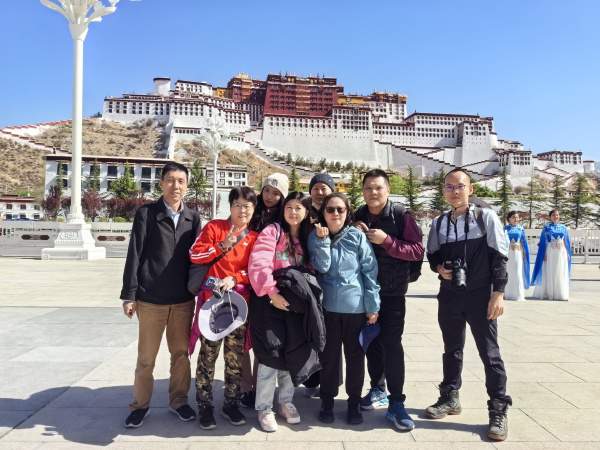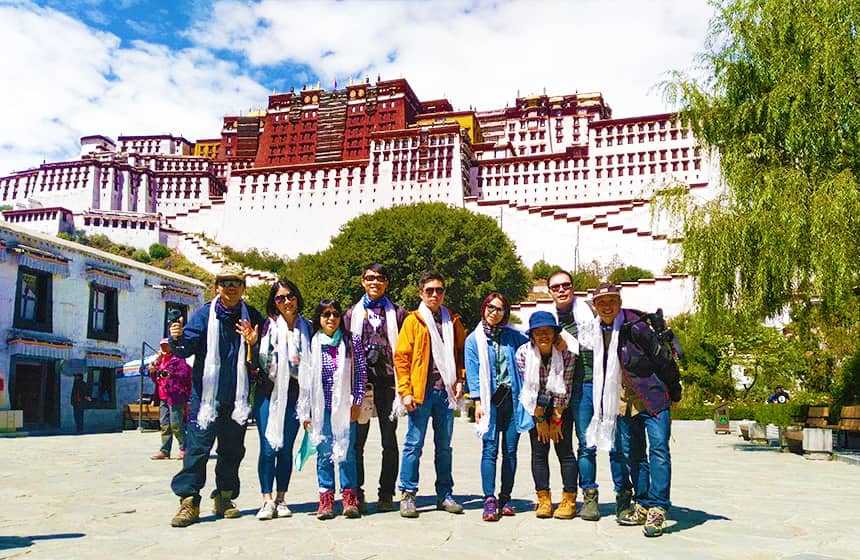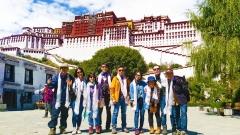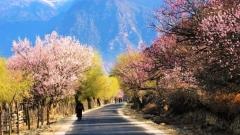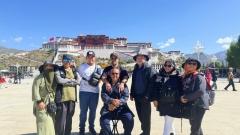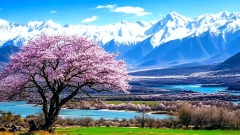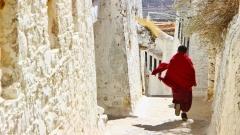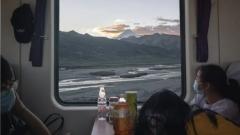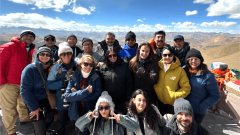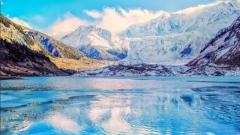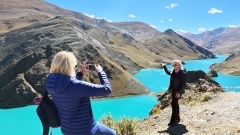Traditional Tibetan clothing, with its bold colors, intricate accessories, and region-specific styles, offers a window into the beliefs, livelihoods, and customs of the Tibetan people. Far from mere garments, these robes, headdresses, and ornaments carry stories of nomadic resilience, monastic devotion, and festive celebration.
The Essence of the Tibetan Robe (Chuba)
At the heart of Tibetan dress lies the chuba (or robe), the most ubiquitous garment worn by men and women alike. Its key characteristics include:
- Generous Front Panel: A broad flap that can be pulled over or folded back, often revealing the underlayer.
- Long Sleeves & Loose Waist: Sleeves may be rolled up during work; in cold weather, they wrap around the body.
- Decorative Trimmings: Edges of collar, cuffs, front opening, and hem are bound with pulu (sheepskin), silk, or leather strips.
- Adjustable Fit: The extra length is tied at the waist with a woven sash, creating a pouch that can double as storage.
Practicality meets elegance: during the day, the chuba’s voluminous sleeves protect against sun and wind while allowing freedom of movement in fields or pastures. At night, these same sleeves can envelop the wearer like a blanket.
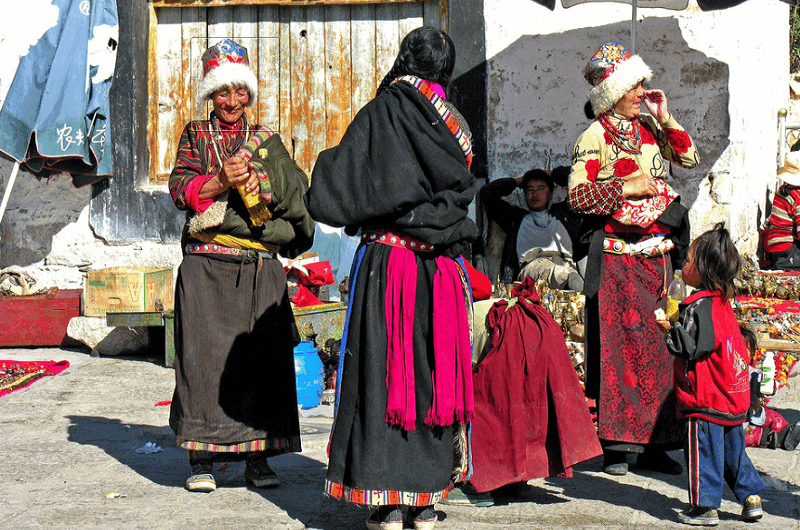
Tibetan Robe
Gender Distinctions in the Chuba
Although the basic robe silhouette is shared, men’s and women’s styles diverge in subtle yet telling ways:
| Aspect | Men’s Chuba | Women’s Chuba |
|---|---|---|
| Collar & Shirt | High-collared shirt beneath; robe fastened under right arm with cloth belt. | Under-shirt may have lower collar; robe cut slightly narrower and may lack sleeves. |
| Color Palette | Typically neutral or dark hues, with white inner shirts. | Bright, contrasting colors; vibrant turned-down collars. |
| Sleeve Styling | Sleeves often tied together across the chest for warmth. | In festive settings, sleeves fly free, resembling butterfly wings. |
| Length & Fit | Full-length and roomy for practical use. | Tailored to accentuate form, sometimes with decorative pleats. |
Essential Accessories for Tibetan Costumes
Tibetan attire reaches its fullest expression when paired with accessories that reflect regional artistry and social status. Key elements include:
Belts & Sashes
- Woven wool or silk sashes to cinch the waist.
- Often richly patterned in local motifs.
Footwear
- Boots: High, leather-soled boots embroidered in bright threads.
- In herding regions, boots may be lined with fur for insulation.
Jewelry & Ornaments
- Gold and silver jewelry set with amber, coral, turquoise, jadeite, and pearls.
- Women: Earrings, necklaces, bracelets, rings, and the iconic gawu (amulet box).
- Men: Bracelets, earrings, and occasionally ceremonial swords or knives.
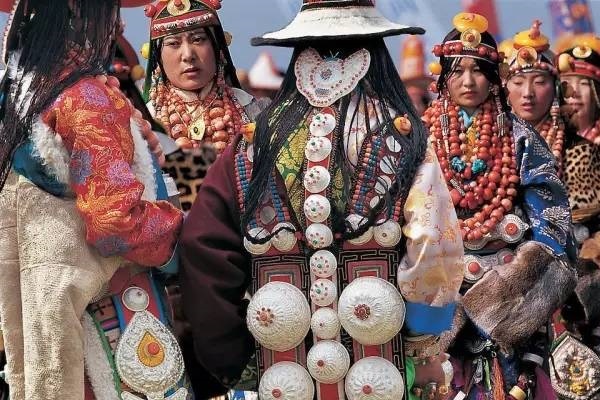
Accessories for Tibetan Costumes
Tibetan Headwear: Hats and Headdresses
Head coverings vary by gender, season, and social role:
Men’s Hats
Felt or cloth hats, sometimes adorned with silk tassels or woven silk bands.
Sturdy designs ideal for sun, wind, and dust.
Women’s Headdresses
Bazhu and Baguo: Ornate frameworks decorated with beads, metals, and silk.
Seasonal Variations:
- Summer: Rarely worn; hairstyles take center stage.
- Monsoon: White felt caps or woolen rain hoods.
- Winter: Fox or sheepskin-lined hats and scarves for maximum warmth.
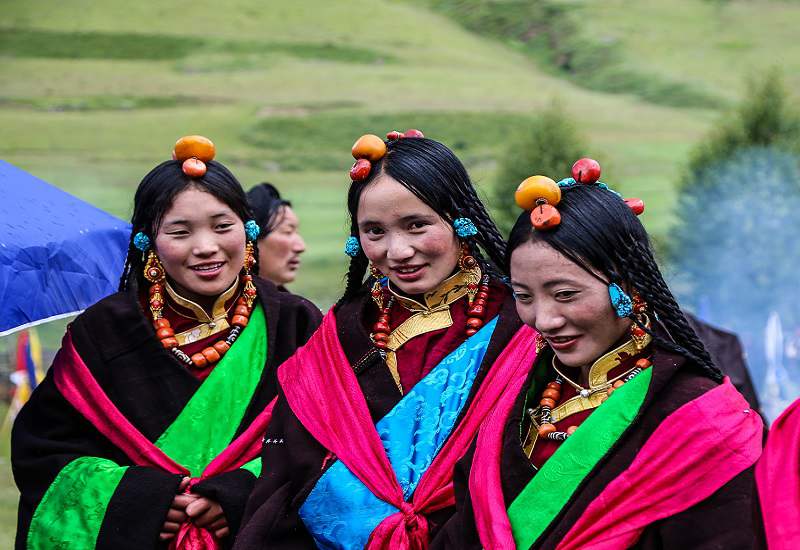
Tibetan Headwear
Regional Variations in Tibetan Clothing
Tibet’s vast geography—from arid highlands to fertile valleys—gives rise to distinct local styles.
Lhasa and Southern Farming Areas
- Climate: Warm, damp summers and moderate winters.
- Fabrics: Hand-woven wool, tweed, and occasional silks.
- Details:
- Right-side fastenings mark the southern style.
- Men’s robes often feature luxurious silk trimming.
- Women wear shorter shirts under oversized robes fastened with wide belts.
Northern Pasturing Regions
- Climate: Harsh, cold winters; mild summers.
- Garments:
- Thick, bulky chubas lined with fur or corduroy.
- Robes roomy enough to hold a child close for warmth.
- Accents:
-
- Boots brightly colored with intricate embroidery.
- Women’s aprons adorned with vivid stripes for added flair.
Sichuan Tibet–Inhabited Areas (Ganzi and Aba)
- Influenced by local Qiang customs.
- Men: Serge or fabric shirts with large collars; leather jackets in winter.
- Women: Shorter jackets with wide fabric lapels; sheepskin coats or collarless wool overshirts.
- Color scheme leans to blues and blacks, punctuated by colorful belts.
Monastic Attire: Lamas and Monks
Monastic robes follow strict Buddhist guidelines, with variations by sect and rank:
| Sect | Robe Color | Hat Color | Notable Features |
|---|---|---|---|
| Gelugpa | Maroon & red | Yellow hats | Simple patchwork kasaya; optional satin trimmings for senior lamas. |
| Nyingmapa | Maroon | Red hats | Kasaya worn during chanting; hats removed outside temple grounds. |
- Boots: Special monastic boots or bare feet depending on ritual.
- Higher ranking monks may have silk accents or distinct kasaya patterns denoting status.
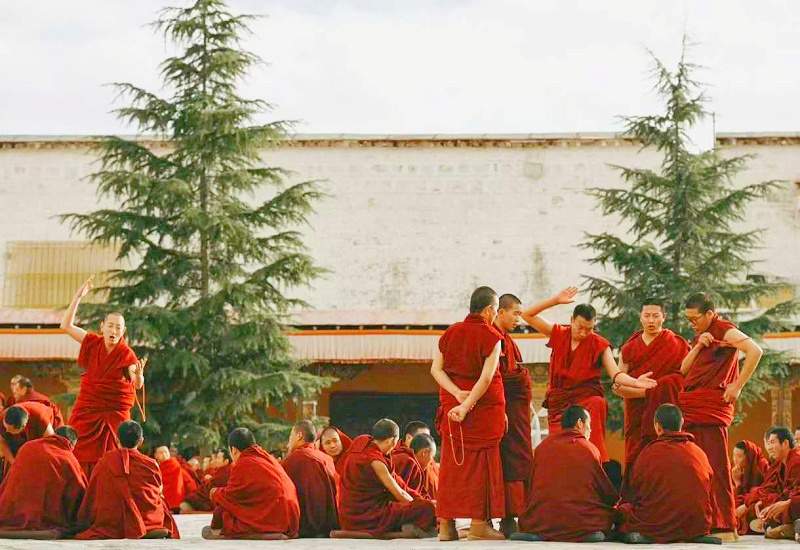
Tibetan Monk
Tibetan Festival Costumes: Splendor in Celebration
Tibetan festivals showcase some of the most lavish traditional attire, where every color, fabric, and ornament conveys joy and reverence.
Key Features
- Silk & Cotton Weaves: Fine materials in vivid hues.
- Colorful Trimmings: Bright edges replacing everyday black or neutral borders.
- Elaborate Jewelry: Ample use of turquoise, coral, and amber.
Example: Nagqu Horse Racing Festival
- Bursting with azure, dark blue, and pale green robes.
- Riders wear red knickerbockers and thigh-high boots of yak leather.
- Festival robes often layered to display contrasting colors at sleeves and hems.
Even as modern clothing (sportswear, down jackets) has entered daily life, traditional dress remains predominant during New Year celebrations (Losar), weddings, and religious gatherings.
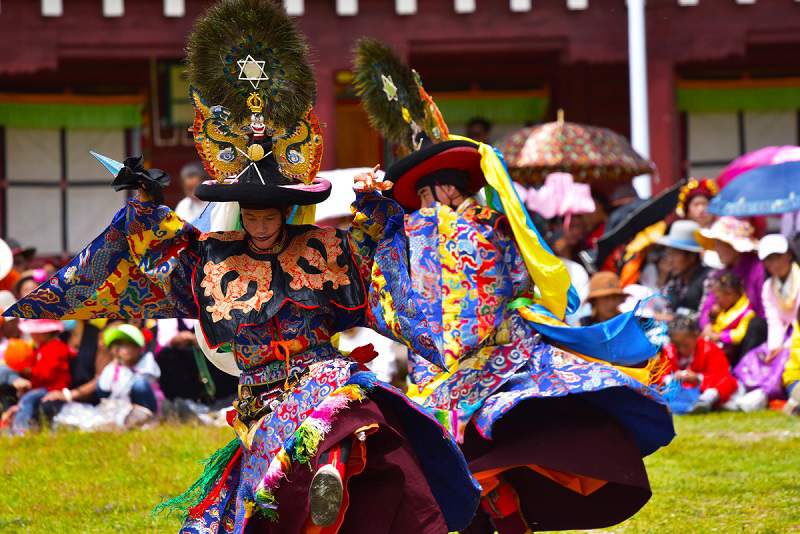
Tibetan Festival Costumes
Mourning & Special Occasion Attire
Tibetan clothing adapts to life’s greatest transitions:
- Mourning Garb:
- Women wear green hair strings in the first year, pale red in the second, and reused red strings in the third.
- Simplified ornaments and subdued colors reflect solemn respect.
- Wedding Dress:
- Exquisite silks and heavy jewelry.
- Gawu boxes prominently displayed, containing sacred relics or prayers.
Embracing Tibetan Robes as a Visitor
One of the most memorable ways to connect with local culture is to don a chuba yourself. When touring with China Dragon Travel:
- Rental & Styling: We arrange authentic robe rentals in Lhasa, complete with sashes and accessories.
- Guided Instruction: Local experts teach you how to tie and layer robes correctly.
- Photo Opportunities: Capture portraits at iconic sites—Potala Palace, Sera Monastery, or the shores of Yamdrok Lake.
- Cultural Etiquette: Learn proper ways to greet elders, exchange scarves (khata), and wear hats according to season.
Wearing a chuba transforms sightseeing into an immersive encounter with Tibetan life, making every photograph a keepsake of cross-cultural friendship.
Where to Acquire Authentic Tibetan Garments
For those wishing to bring home a piece of Tibetan heritage:
- Barkhor Street (Lhasa): A bustling bazaar of boutiques and stalls selling handmade robes, boots, and jewelry.
- Local Workshops: Visit artisan cooperatives outside the city for custom-tailored chubas and one-of-a-kind headdresses.
- Monastery Craft Fairs: Seasonal fairs often showcase monastic textiles dyed and embroidered by nuns.
Tip: Prices can vary widely—bargaining is customary, and your guide can recommend reputable shops that balance quality and fair value.
The Living Legacy of Tibetan Dress
Traditional Tibetan clothing continues to evolve—designer chubas adorned with contemporary patterns, upcycled materials, and fusion styles appear alongside centuries-old techniques. Yet the core elements endure: practicality for high-altitude life, symbolism tied to faith and social role, and the vibrant expression of a proud, resilient people.
When you don a Tibetan robe, tilt a monk’s hat, or fasten a multi-gemmed necklace, you become part of this living tapestry—an honored guest in a tradition woven through generations atop the “Roof of the World.”
Experience Tibetan Culture with China Dragon Travel
At China Dragon Travel, we specialize in creating immersive Tibetan journeys that honor local traditions. Our expert guides not only lead you to the region’s most breathtaking landscapes but also introduce you to master weavers, artisan jewelers, and monastic communities. From robe-rental and photography sessions in Lhasa’s historic squares to private visits in family-run workshops, our tours ensure you fully experience the artistry and meaning behind every thread of traditional Tibetan clothing. Contact us today to weave your own story into the vibrant fabric of Tibet.



